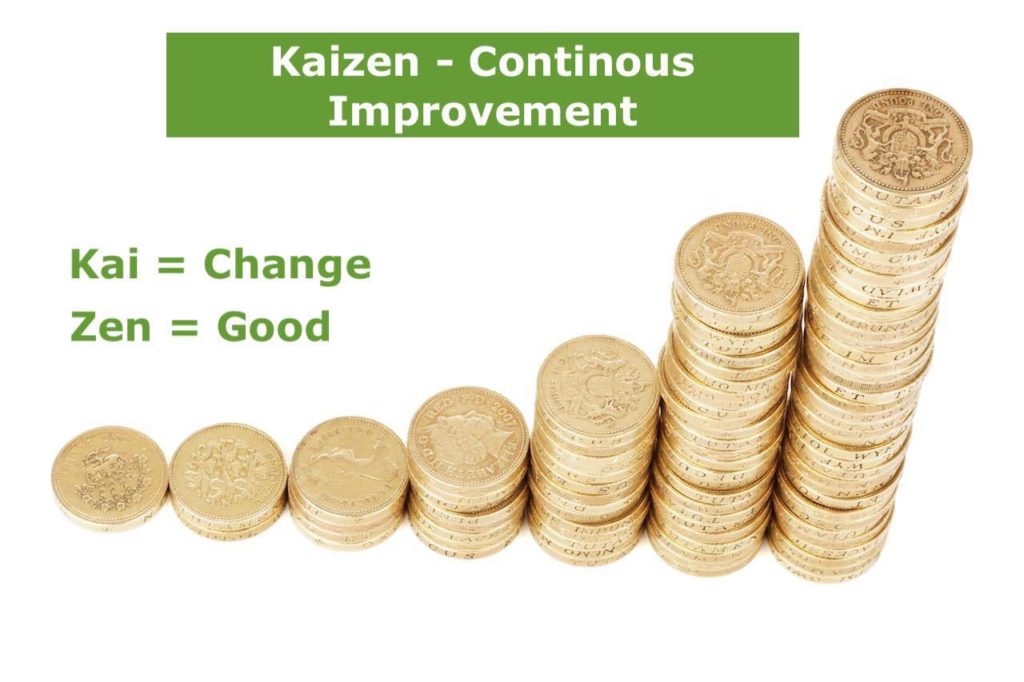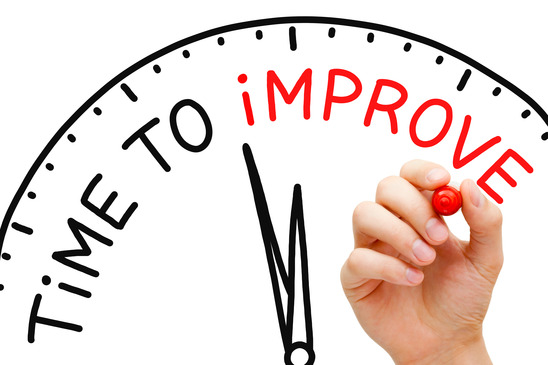Kaizen
What is Kaizen?
- Business is like riding a bicycle, either you keep moving or you fall down.
- Your ability to learn faster than your competition is your only sustainable competitive advantage,
What is kaizen
- The Japanese word “KAIZEN” means “change for the better” or “continuous improvement.”
- Business philosophy or system based on making positive changes to improve efficiency that focuses on continuous improvement continuous improvement in the way we do our job, without spending much money..
- Gradual, unending improvement, doing “little things” better every day, setting and achieving ever higher standards
- The cumulative effect of these many ‘small changes’ over time can be quite significant, especially if all of the employees within a company and its leaders are committed to kaizen..
- KAIZEN – is a mindset change process. It is not just scrap and build, but build on what you have, build on existing strengths.
- Employees are encouraged to make ‘small changes’ in their work area on an ongoing basis.
Topics Covered: Kaizen
- What is Kaizen – Continuous Improvement
- Why KAIZEN is Required
- What Kaizen is not
- Why to Do Kaizen
- KAIZEN Mission
- Value added vs. Non value added activities
- 8 type of wastes
- Kaizen principles
- Operation KAIZEN , Process KAIZEN , Layout KAIZEN
- 4 M’s
- How to do KAIZENs?
- What is GEMBA
- What is GEMBA Kaizen
- Continuous improvement in SQDCME
- PDCA cycle for improvement
- 5W 1H principle
- When to do Kaizen
- Who will do Kaizen
- Where to do Kaizen
- How to do Kaizen
- Hunting for 3Ms (Muda, Mura, Muri)
- Kaizen Sheet
- Examples of Kaizens
- Evaluation of Kaizen
Benefits of Kaizen:
- Forms a solid foundation upon which to build continuous improvement
- Improved creativity of employees
- High employee morale, involvement & sense of responsibility
- Improved work place
- Elimination of wastes
- Cost reduction
- Smooth flow of process
- Reduction in lead time (cycle time)
- Increase in productivity
- Reduction in inventory
- Quality performance, fewer defects and rework (in house and at customer end).
- Better space utilization
- Improved workplace organization
- Fewer machine and process breakdowns.
- Higher efficiencies, more output per man hour.
- Clean work place.
- Easiness to employees.
- Visual control improves work place management.
- Greater customer satisfaction.
- Builds good reputation of company.
- Reduced employee fatigue.
- Good ergonomics.



